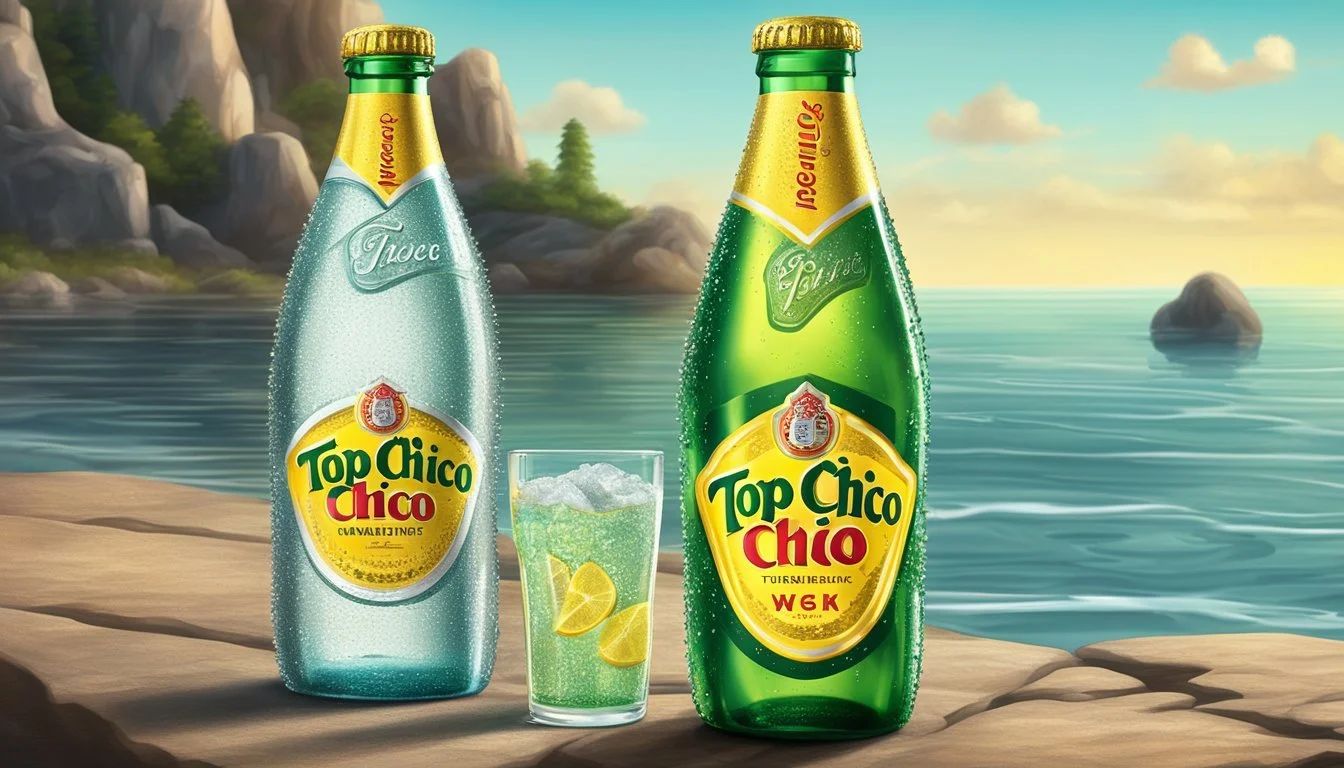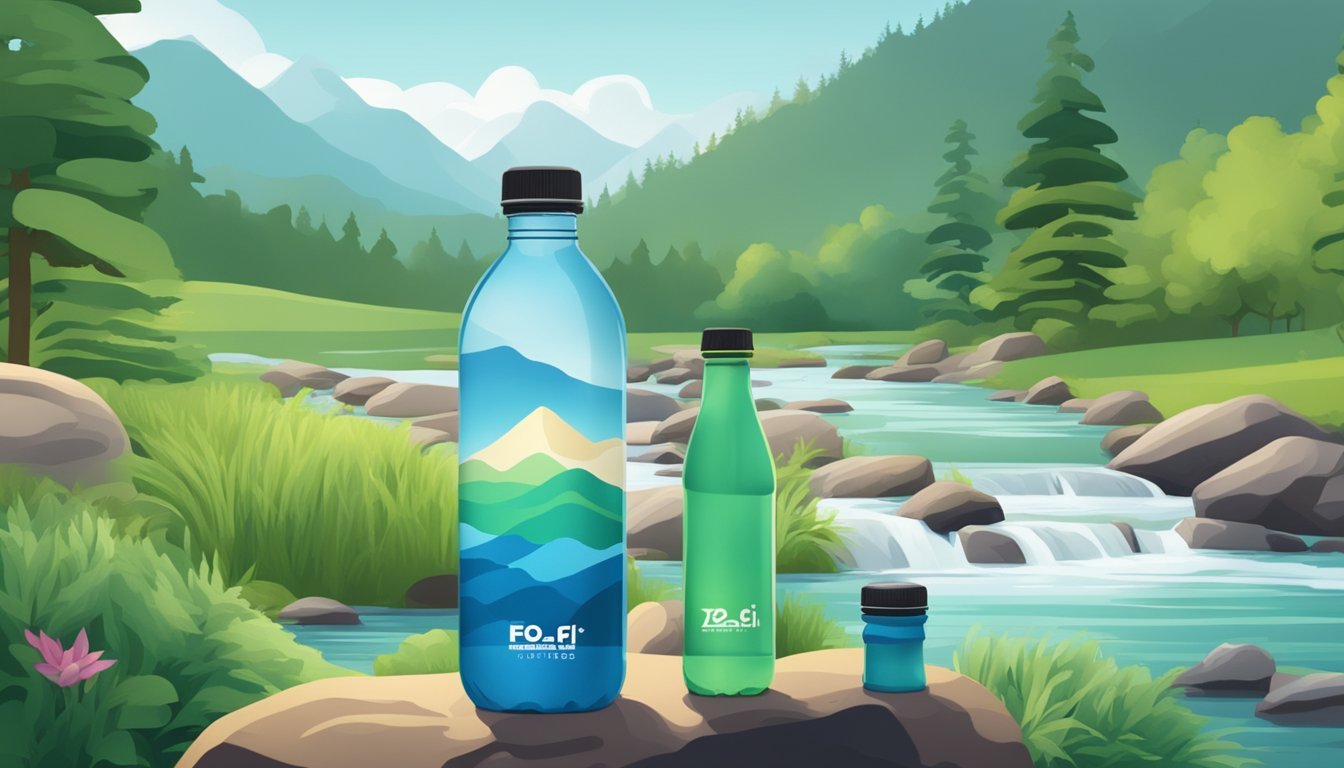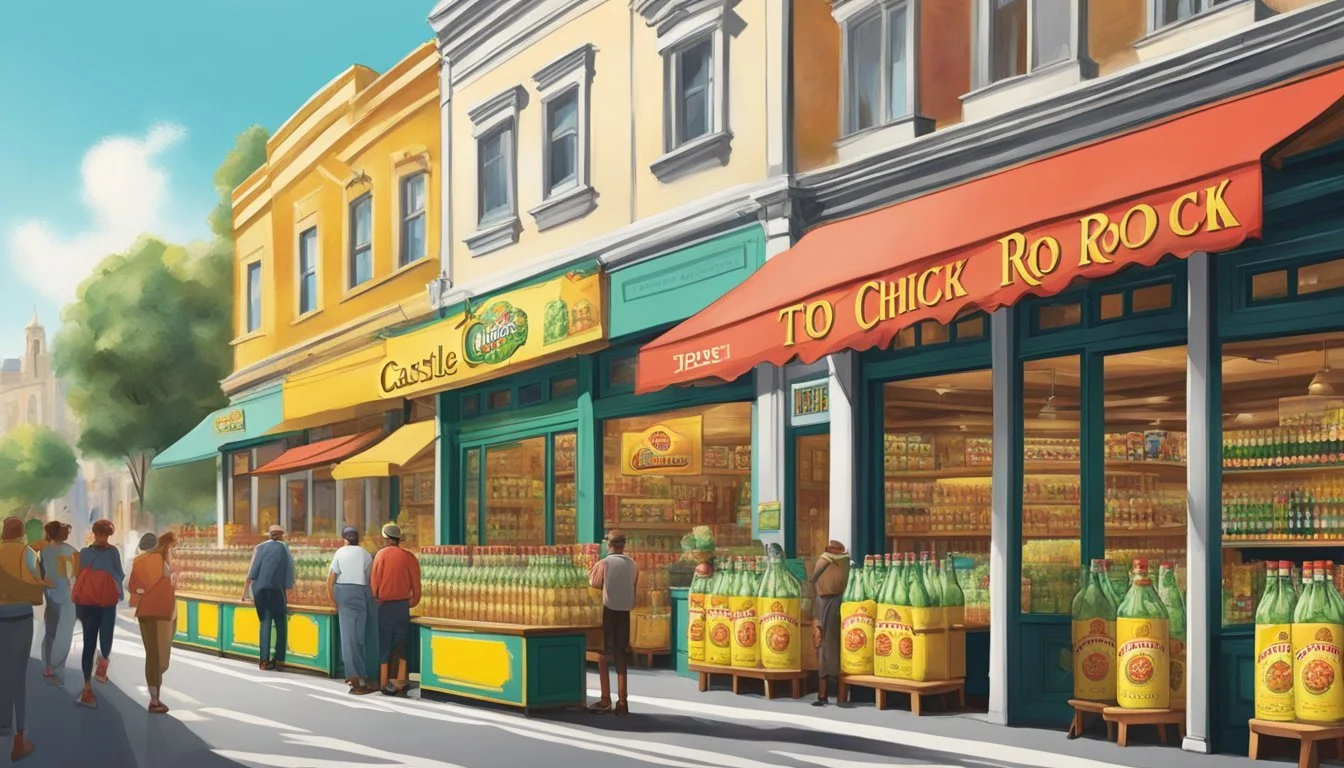Topo Chico vs. Castle Rock
Which Bottled Water is Better? Comprehensive Comparison
When it comes to premium bottled water, Topo Chico and Castle Rock often stand out as top contenders. Topo Chico, with its intense carbonation and mineral-rich profile, offers a distinct crispness that has garnered a cult-like following, especially for those who prefer a sparkling option. In contrast, Castle Rock prides itself on its pristine, naturally filtered spring water from California’s Mount Shasta, catering to fans of pure, still water.
Both brands highlight unique strengths. Topo Chico’s effervescent quality provides a refreshing experience that sets it apart in the sparkling water market. Meanwhile, Castle Rock offers a smooth taste that emphasizes its natural origin and purity, appealing to those who favor a more subtle hydration experience.
Each bottled water thus caters to different taste preferences and usage occasions. By examining the mineral content, carbonation, and overall flavor profile of these waters, consumers can determine which aligns best with their hydration needs.
Origins and History
Both Topo Chico and Castle Rock have rich histories tied to unique geographic locations, forming the backbone of their distinct identities.
The Story of Topo Chico
Topo Chico has its origins rooted in Monterrey, Mexico. Established in 1895, the brand sourced its mineral water from the spring near Cerro del Topo Chico. "Topo" translates to "mole" and "chico" means "small," reflecting the mole-shaped hill that characterizes the area.
The mineral water quickly became a staple in northern Mexico and Texas, appreciated for its health benefits and unique flavor.
In 2017, The Coca-Cola Company purchased Topo Chico for $220 million, recognizing its growing popularity. Despite this acquisition, the water continues to be sourced from the original spring, maintaining its historical and geographic authenticity.
Castle Rock: From the Ouachita Mountains
Castle Rock's bottled water story begins in the Ouachita Mountains of Arkansas. Known for its pristine and high-quality springs, this region provides exceptionally clear and pure water.
The brand focuses on sustainable practices, harvesting water in a way that preserves the natural ecosystem. Castle Rock sources its water from a spring deep within the Ouachita Mountains, ensuring minimal exposure to contaminants.
Certified as organic and non-GMO, Castle Rock water has earned a reputation for purity and sustainability.
This focus on the environment is a core element of its brand identity, highlighting the natural integrity of the water from one of North America's most reputed mountain ranges.
Product Profile
This section compares the distinct attributes and characteristics of Topo Chico and Castle Rock bottled waters, considering their mineral compositions, quality, and purity.
Topo Chico Mineral Composition
Topo Chico is a sparkling mineral water sourced from Monterrey, Mexico. Known for its intense carbonation, it provides a refreshing and crisp taste. The mineral composition includes sodium, calcium, magnesium, and potassium.
Mineral Concentration (mg/L) Sodium 15.0 Calcium 40.0 Magnesium 7.0 Potassium 2.0
These minerals contribute to the overall flavor and potential health benefits. Topo Chico's bubbly texture makes it a popular choice for a revitalizing drink option.
Castle Rock Water Quality and Purity
Castle Rock water is drawn from natural springs in Mt. Shasta, California. It is non-sparkling and emphasizes high purity. The water undergoes natural filtration through volcanic rock, resulting in minimal human intervention.
Quality control ensures that no artificial additives or contaminants are present. Mineral content highlights include silica, calcium, and magnesium, contributing to its smooth taste.
Mineral Concentration (mg/L) Silica 30.0 Calcium 6.0 Magnesium 4.0
Castle Rock prides itself on delivering exceptionally clean and refreshing water, noted for its natural purity and clarity.
Health and Hydration
When comparing Topo Chico and Castle Rock bottled water in terms of health and hydration, several factors come into play, such as beneficial minerals and potential health risks.
Beneficial Minerals and Their Effects
Both Topo Chico and Castle Rock contain essential minerals that contribute to overall health and hydration. Topo Chico is known for its high mineral content, including magnesium, calcium, potassium, and sodium.
Magnesium plays a crucial role in muscle function and energy production.
Calcium supports bone health and dental health.
Potassium helps regulate fluid balance, muscle contractions, and nerve signals.
Sodium is essential for maintaining proper hydration and blood pressure levels.
Castle Rock water, sourced from pristine springs, also provides vital minerals. It typically contains calcium and magnesium, which promote bone health and muscle function, respectively. Ensuring an adequate intake of these minerals from water can support a balanced diet and overall wellness.
Health Risks and Contaminants
While beneficial, it's important to consider potential contaminants in bottled water. Recent studies have raised concerns about PFAS chemicals (per- and polyfluoroalkyl substances) in Topo Chico.
Elevated PFAS levels can pose health risks, including hormonal disruptions and increased cancer risk.
Topo Chico has been flagged for higher PFAS content, making it a less ideal choice for those concerned about these chemicals.
Castle Rock water, on the other hand, has not been associated with significant contaminants. It is often touted for its purity and safety. Both brands being bottled in glass reduces the risk of plastic leaching, which can introduce estrogenic chemicals into the water, posing an additional health concern.
In summary, while both Topo Chico and Castle Rock offer health benefits through their mineral content, consumers should weigh these benefits against potential health risks, such as contaminants.
Environmental Factors and Sustainability
Topo Chico and Castle Rock both claim to prioritize sustainability, yet their approaches to environmental factors differ significantly. This section explores their bottling processes and sustainability practices to shed light on their ecological footprint.
Bottling Process and Ecological Impact
Topo Chico primarily uses glass bottles for its sparkling water, reducing the environmental impact compared to plastic alternatives. Glass is infinitely recyclable, which aligns well with sustainability goals. However, the production and transportation of glass bottles are energy-intensive processes that increase their overall carbon footprint.
Castle Rock opts for eco-friendly packaging options, including both glass and BPA-free plastic bottles. This dual approach aims to meet consumer demand while minimizing environmental impact. Their commitment to using local springs for water sourcing reduces the transportation footprint significantly.
Both companies strive to adhere to Environmental Protection Agency guidelines. Yet, Topo Chico's reliance on glass bottling has higher energy consumption. In contrast, Castle Rock's local sourcing techniques could make it a more ecologically sound choice by reducing transportation emissions.
Sustainability Practices of Bottled Water Brands
Topo Chico recently pledged to improve its sustainability practices. They have begun initiatives to cut down on PFAS levels in their water, addressing health concerns while also considering ecological well-being. Additionally, Topo Chico is exploring options for using more eco-friendly packaging in the future.
Castle Rock’s sustainability efforts are more advanced. They participate actively in reforestation projects, helping offset carbon emissions. Their adherence to strict EPA guidelines ensures water quality while minimizing environmental harm. Castle Rock also promotes a closed-loop recycling program, urging consumers to recycle and return used bottles.
While both brands are making strides toward greater environmental responsibility, Castle Rock’s holistic sustainability strategies present a model for minimizing ecological footprints.
Consumer Experience
When comparing Topo Chico and Castle Rock bottled water, key factors that influence the consumer experience include taste, mouthfeel, packaging, and accessibility.
Taste and Mouthfeel Comparison
Consumers often distinguish bottled water brands based on their taste and mouthfeel. Topo Chico offers a unique experience with its naturally carbonated mineral water, providing a bubbly and refreshing sensation that many sparkling water enthusiasts enjoy. The slightly tangy and mineral-rich flavor is a signature characteristic appreciated by its loyal followers.
In contrast, Castle Rock targets consumers who prefer a more natural, still water experience. Sourced from the pristine springs of Mt. Shasta, Castle Rock water is known for its smooth, clean taste with a hint of natural sweetness. This makes it a desirable choice for those seeking a pure and uncomplicated still water.
Both options cater to different preferences but consistently receive positive feedback for their quality and distinctive profiles.
Packaging and Accessibility
Packaging plays a crucial role in the consumer experience, influencing convenience and appeal. Topo Chico is typically available in both glass and plastic bottles, with the glass version being particularly popular for its vintage, premium look. The iconic shape and label design contribute to its aesthetic value, making it a staple in many social settings.
Castle Rock also emphasizes quality in its packaging. It offers water in recyclable BPA-free plastic bottles and glass options. The clear, minimalist design on the labels underscores the brand's commitment to nature and purity.
In terms of accessibility, both brands are widely available at various retail outlets and online stores. However, Topo Chico's more extensive distribution network and popularity may make it slightly easier to find in diverse markets. Castle Rock's distribution might be more focused on health food stores and specialty markets.
Regulatory and Safety Standards
Regulatory and safety standards for bottled water can vary between brands, with specific guidelines set by health authorities and compliance by manufacturers playing crucial roles in ensuring consumer safety.
Analysis by Health Authorities
Health authorities such as the FDA and the International Bottled Water Association (IBWA) regulate bottled water quality. The FDA sets standards for contaminants like lead and chlorine, ensuring they remain below harmful levels. PFAS, a group of chemicals found in some bottled waters, is under scrutiny due to potential health risks. Consumer Reports tests revealed PFAS levels in multiple brands, highlighting the need for stringent regulations.
Topo Chico and Castle Rock must both meet these health standards. Analysis by organizations like Consumer Reports shows variations in compliance, with Topo Chico previously found to have higher PFAS levels but making significant reductions. Evaluations by these authorities inform consumers and push brands toward maintaining safety standards.
Brand Compliance with FDA and IBWA Guidelines
Compliance with FDA and IBWA guidelines ensures bottled water safety and quality. The IBWA’s standards include limits on contaminants such as lead, chlorine, and additives, and mandate regular testing. The FDA’s labeling requirements and safety limits further enhance transparency and safety.
Topo Chico initially faced criticism for high PFAS levels but has since reduced them, as shown by recent tests. Castle Rock maintains adherence to both IBWA and FDA standards, emphasizing their commitment to consumer health. Regular evaluations and compliance with these guidelines are essential in reassuring consumers about the safety of their bottled beverages.
Market Position and Branding
Topo Chico and Castle Rock hold distinct places in the bottled water market. Topo Chico has developed a cult following while Castle Rock competes based on its environmental credentials and crisp flavor.
Topo Chico's Cult Following and Brand Evolution
Topo Chico, bottled at its source in Monterrey, Mexico, has garnered significant consumer loyalty. Originally recognized for its mineral-rich taste, the brand has expanded its reach under the ownership of Coca-Cola.
Marketing strategies have successfully woven Topo Chico into the lifestyle of a younger audience. Its presence at events and partnerships with trendy brands have bolstered its appeal. Celebrity endorsements and social media buzz further amplify its cult status, setting it apart from competitors like La Croix and Spindrift.
The branding emphasizes authenticity and tradition, traits that resonate with consumers seeking premium experiences. This approach has positioned Topo Chico favorably against mainstream brands such as Perrier and San Pellegrino.
Castle Rock in the Competitive Landscape
Castle Rock spring water, sourced from Northern California, competes primarily on its environmental sustainability and taste. It markets itself as a Nestlé alternative, appealing to eco-conscious consumers. The brand emphasizes its B Corporation certification, reinforcing its commitment to social and environmental performance.
Despite lacking the same global recognition as Dasani or San Pellegrino, Castle Rock has steadily built a reputation for quality. Its crisp flavor and natural sourcing attract those who prioritize purity and sustainability. Participation in eco-friendly initiatives and community engagement helps differentiate the brand.
Castle Rock's branding leans into purity and ethical production, which contrasts sharply with mass-market competitors. This niche positioning appeals to a segment of consumers willing to pay a premium for ethically-sourced water.
Associated Products and Variations
Both Topo Chico and Castle Rock offer a variety of product options that cater to different tastes and preferences. From flavored sparkling waters to adventurous crossovers into other types of beverages, both brands have diverse offerings to please their consumers.
Flavored Sparkling Water Options
Topo Chico is known for its flavored sparkling water selections. Popular variations include Twist of Lime, Twist of Grapefruit, and other fruit-infused options. These products maintain the brand's signature intense carbonation while offering a subtle flavor twist.
Castle Rock, primarily offering spring water, has also introduced flavored sparkling versions. They focus on natural essence, ensuring a sugar-free and low-calorie experience for those who seek a healthier alternative.
Crossover into Other Beverages
Topo Chico has expanded its repertoire to include hard seltzer options, combining mineral water with alcohol for a refreshing drink. These are popular in cocktails, particularly Ranch Water, which mixes Topo Chico, lime juice, and blanco tequila.
Castle Rock has remained more traditional, focusing on high-quality spring water. Unlike Topo Chico, their crossover into beverages has been limited, maintaining a niche market primarily in natural and unadulterated water products.
Conclusions and Final Thoughts
Evaluating both Topo Chico and Castle Rock reveals unique characteristics in each brand.
Topo Chico stands out due to its sparkling nature and mineral content. Coca-Cola's recent efforts to reduce PFAS chemicals in Topo Chico highlight a commitment to safety. Yet, concerns remain about trace levels of these substances.
Castle Rock emphasizes its source from pristine springs, appealing to consumers seeking natural, untreated water. The brand’s focus on purity and lack of additives resonates with health-conscious individuals.
When comparing taste, Topo Chico offers a crisp, effervescent experience, whereas Castle Rock provides a smooth and clean flavor. Preferences will depend on whether one favors sparkling or still water.
Key Points:
Topo Chico: Known for its sparkling quality and recent improvements in PFAS levels.
Castle Rock: Valued for natural spring sourcing and untreated purity.
Both brands offer distinct advantages, catering to different tastes and health preferences.
More About Topo Chico
Core Hydration vs Topo Chico: Which Bottled Water is Better?
Icelandic Glacial vs Topo Chico: Which Bottled Water is Better?
Mountain Valley Spring Water vs Topo Chico: Which Bottled Water is Better?
Nestle Pure Life vs Topo Chico: Which Bottled Water is Better?
San Pellegrino vs Topo Chico: Which Bottled Water is Better?
Topo Chico vs Aqua Carpatica: Which Bottled Water is Better?
Topo Chico vs Cascade Mountain: Which Bottled Water is Better?
Topo Chico vs Crystal Geyser: Which Bottled Water is Better?
Topo Chico vs Hawaii Volcanic: Which Bottled Water is Better?
Topo Chico vs Hawaiian Springs: Which Bottled Water is Better?
Topo Chico vs Kirkland Signature: Which Bottled Water is Better?
Topo Chico vs Richard's Rainwater: Which Bottled Water is Better?
Topo Chico vs Solan de Cabras: Which Bottled Water is Better?
Topo Chico vs Talking Rain AQA: Which Bottled Water is Better?
Topo Chico vs Whole Foods 365: Which Bottled Water is Better?
Topo Chico vs Whole Foods Italian Still Mineral water: Which Bottled Water is Better?
More About Castle Rock
Aqua Carpatica vs Castle Rock: Which Bottled Water is Better?
Castle Rock vs Cascade Mountain: Which Bottled Water is Better?
Castle Rock vs Crystal Geyser: Which Bottled Water is Better?
Castle Rock vs Hawaii Volcanic: Which Bottled Water is Better?
Castle Rock vs Hawaiian Springs: Which Bottled Water is Better?
Castle Rock vs Kirkland Signature: Which Bottled Water is Better?
Castle Rock vs Purely Sedona: Which Bottled Water is Better?
Castle Rock vs Richard's Rainwater: Which Bottled Water is Better?
Castle Rock vs Solan de Cabras: Which Bottled Water is Better?
Castle Rock vs Talking Rain AQA: Which Bottled Water is Better?
Castle Rock vs Whole Foods 365: Which Bottled Water is Better?
Castle Rock vs Whole Foods Italian Still Mineral water: Which Bottled Water is Better?
Core Hydration vs Castle Rock: Which Bottled Water is Better?
Icelandic Glacial vs Castle Rock: Which Bottled Water is Better?
Mountain Valley Spring Water vs Castle Rock: Which Bottled Water is Better?
Nestle Pure Life vs Castle Rock: Which Bottled Water is Better?
Poland Spring vs Castle Rock: Which Bottled Water is Better?
San Pellegrino vs Castle Rock: Which Bottled Water is Better?









